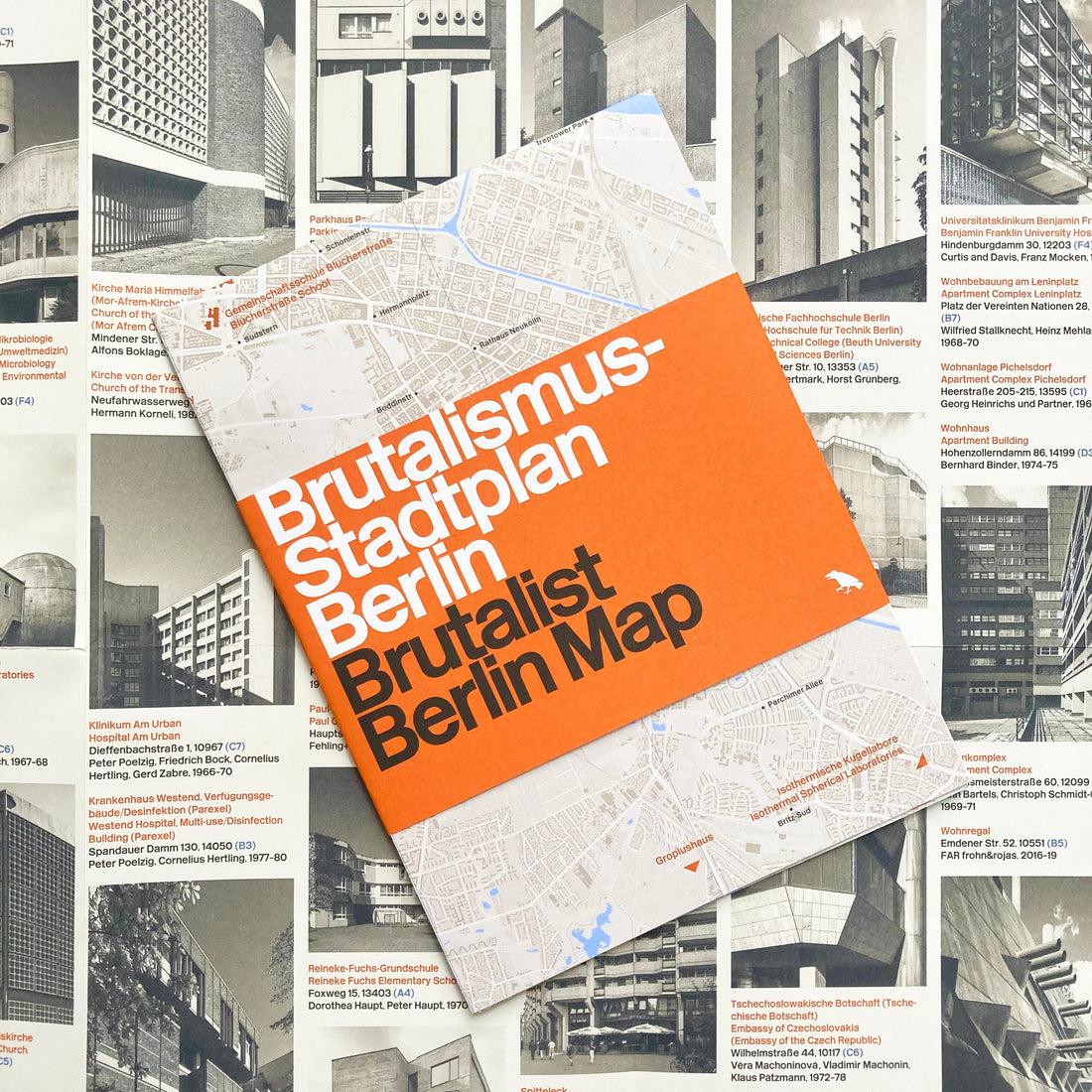
Where to find Brutalist architecture in Berlin
Share
Our new Brutalist Berlin Map / Brutalismus-Stadtplan Berlin is out today. The map is by architectural historian Felix Torkar - like our previous Brutalist titles, it is a two-sided, bilingual guide including a map of Berlin, an introduction, original photography and details of fifty selected buildings.
Brutalist Berlin Map offers insight into Berlin’s surprisingly unique range of concrete architecture. The buildings included on the map, built from the 1950s to today, reflect what Torkar describes as Berlin’s “special place in the history of modern architecture.” Below are a few of our favourites, including captions by Torkar.

Zentrale Tierlaboratorien “Mäusebunker”, Gerd Hänska / Magdalena Hänska, 1968–81
With their battleship-like exterior, the former animal testing laboratories of the Freie Universität Berlin demonstrate how strict rationalism can lead to surprisingly spectacular forms. Despite its remote location, it might be Berlin’s most photographed brutalist monument. While public outcry has stopped last year’s plans for demolition, its future remains unclear.

Isothermische Kugellabore, Horst Welser, 1959-61
The Isothermische Kugellabore were research laboratories for metallurgic experiments that required stable temperatures. Although the shape was purely devised based on technical specifications, the result amounts to what is essentially a large-scale sculpture.

Parkhaus & Wohnanlage Kirchbachstraße 1–2, Peter Heinrichs, Joachim Wermund, 1977–79
Peter Heinrichs and Joachim Wermund designed one of Berlin’s most eclectic housing schemes—a sanguine 1970s glimpse into a high-tech future. The recently added murals complement the quirky composition.
The publication of the Brutalist Berlin Map seeks to place Berlin’s brutalist architecture within a fluid historical context, and hopes to inspire Berliners to help secure these remarkable buildings within their city’s architectural landscape.
The map is available to purchase here.
